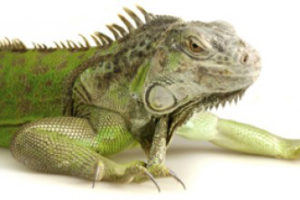Ez a weboldal sütiket használ, hogy a lehető legjobb felhasználói élményt nyújthassuk. A cookie-k információit tárolja a böngészőjében, és olyan funkciókat lát el, mint a felismerés, amikor visszatér a weboldalunkra, és segítjük a csapatunkat abban, hogy megértsék, hogy a weboldal mely részei érdekesek és hasznosak.
Green Iguana
 The green iguana (Iguana iguana) is a species that belongs to reptiles (Reptilia) department of the scaly reptiles (Squamata) order, within this the lizards (saurian or Lacertilia) suborder and the iguania (Iguania) suborder branch and belongs to the iguanidae (Iguanidae) family.
The green iguana (Iguana iguana) is a species that belongs to reptiles (Reptilia) department of the scaly reptiles (Squamata) order, within this the lizards (saurian or Lacertilia) suborder and the iguania (Iguania) suborder branch and belongs to the iguanidae (Iguanidae) family.
The green iguana tropical regions of America, southern Mexico to Paraguay and southern Brazil is very widespread. It can also appear in some Caribbean islands. Although it is not an endangered species, this animal is hunted for meat and for selling to terrariums.
Appearance: The animal body length is 1.2-2 meters and weigh 1.2 to 8 kilograms. The adult male has gray-green scales, wattles well developed, long and back-rowel backwards. The adult female is lighter than males, its wattles and back-rowel smaller. Tail length can reach three times the length of the trunk; muscular and whip-like, suitable for defense as well. Backward curved claws are long and so the animal can hold onto the branches; the female also use them for digging. The young iguana’s brighter colored wattles has hardly evolved, it back-rowel is short.
Lifestyle: The green iguana lives occasionally in groups and is active during the day. Its diet is leaves, berries, fruits and other plant foods. Some animal food is need for their metabolism. At growing age it comsumes invertebrates.
Reproduction: The sexual maturity is reached at age 3. The breeding season depends on the geographical location. The female puts eggs once a year, but this time 25-60 pieces. The eggs are put into a 30-centimeter deep tunnel. The small iguanas develop in 90 days.
</pZOOCAFÉ - Adatvédelmi és Süti tájékoztató
Support: Geekrabbits

Comments are closed.